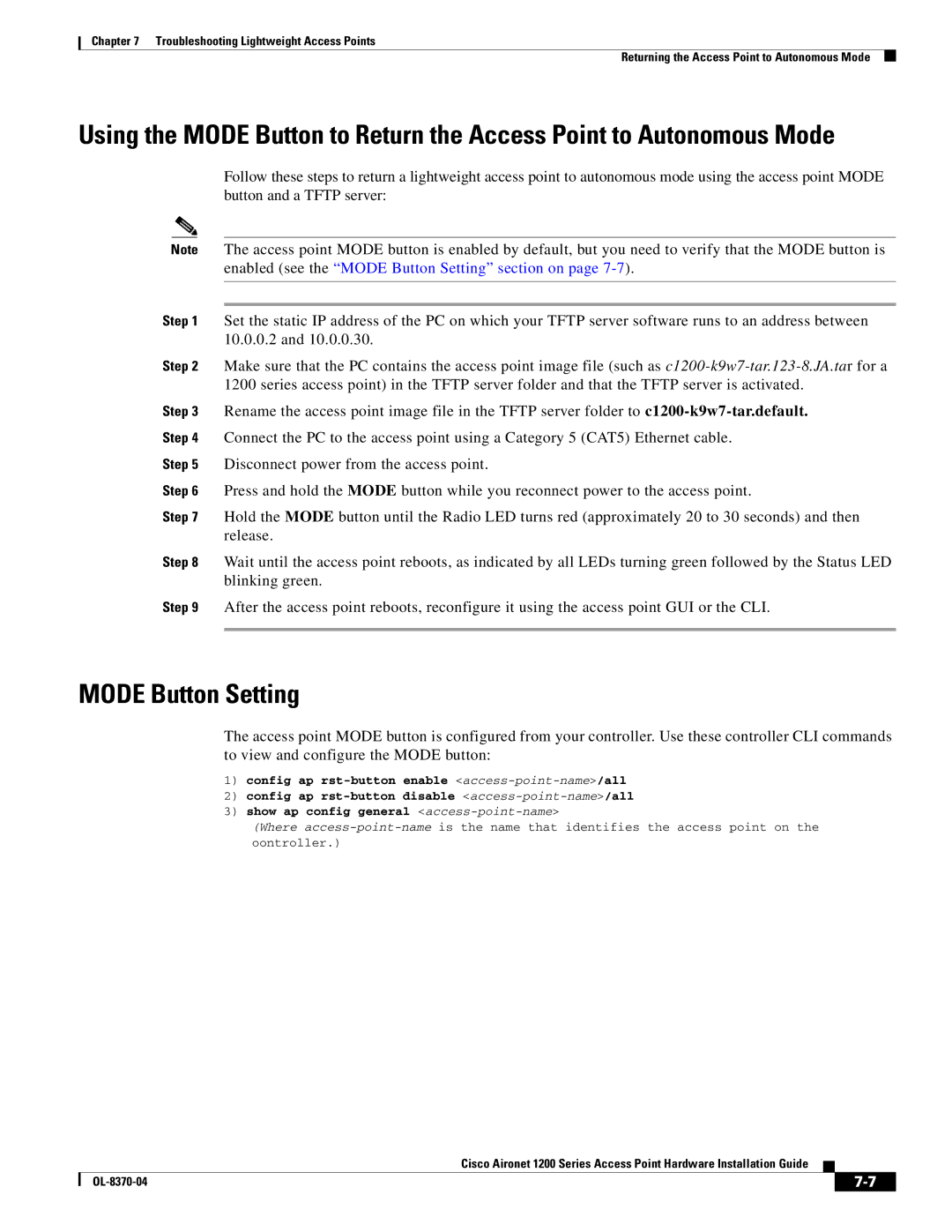
Chapter 7 Troubleshooting Lightweight Access Points
Returning the Access Point to Autonomous Mode
Using the MODE Button to Return the Access Point to Autonomous Mode
Follow these steps to return a lightweight access point to autonomous mode using the access point MODE button and a TFTP server:
Note The access point MODE button is enabled by default, but you need to verify that the MODE button is enabled (see the “MODE Button Setting” section on page
Step 1 Set the static IP address of the PC on which your TFTP server software runs to an address between 10.0.0.2 and 10.0.0.30.
Step 2 Make sure that the PC contains the access point image file (such as
Step 3 Rename the access point image file in the TFTP server folder to
Step 5 Disconnect power from the access point.
Step 6 Press and hold the MODE button while you reconnect power to the access point.
Step 7 Hold the MODE button until the Radio LED turns red (approximately 20 to 30 seconds) and then release.
Step 8 Wait until the access point reboots, as indicated by all LEDs turning green followed by the Status LED blinking green.
Step 9 After the access point reboots, reconfigure it using the access point GUI or the CLI.
MODE Button Setting
The access point MODE button is configured from your controller. Use these controller CLI commands to view and configure the MODE button:
1)config ap
2)config ap
3)show ap config general
(Where
oontroller.)
Cisco Aironet 1200 Series Access Point Hardware Installation Guide
|
| ||
|
|
